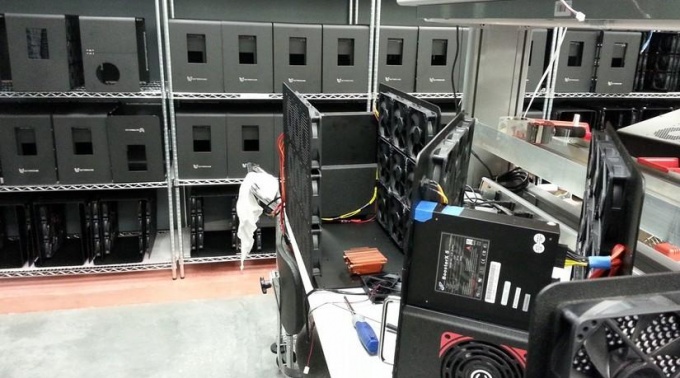
Mining history, forms of extraction, the information on effective and profitable mining, and profitability calculation are mentioned in the article.
The main process of mining bitcoin and other altcoins is mining. This action is not comparable to the standard printing of funds, as it has a specially laid function. In addition, almost everyone can be engaged in mining cryptocurrencies.
In a more sophisticated version, mining is the activity of maintaining network health through the closure and creation of new blocks in the blockchain, using computing power. Programmers use the resources of their computers to perform certain calculations to find the hashes (digital signatures) that close the block. If the miner manages to" find " the hash, then he gets a reward in the amount of one unit of cryptocurrency.
For popular cryptocurrencies such as bitcoin, Ethereum, Bitcoin Cash, mining is necessary to increase the issue. As miners are interested in rewards, so the network is interested in them, as they ensure the functionality and integrity of the system.
When the leading cryptocurrency, bitcoin appeared in the 2009, a group of specialists led by a certain Satoshi Nakamoto decided to limit the limit of its emission ceiling to 21,000,000 BTC. In addition, digital gold recalculates the mining difficulty level every 2016 blocks (approximately 14 days). This feature is designed to protect bitcoin from inflation processes and requires miners to use increasingly serious equipment to mine new coins. It is predicted that the last bitcoin token will be mined by the middle of the next century.
In 2010-2011, miners began to use powerful equipment, including video cards with Crossfire or SLI modes. At that time, crypto-enthusiasts could recapture their own investments in a couple of weeks. However, with each passing month, the difficulty level continued to increase. Thus, in 2012, the mining of the first cryptocurrency with the help of the most powerful processors – CPU – ceased to be profitable. And the light appeared farm-installation, which connected a number of powerful graphics cards and ASIC-equipment (specially designed for the mining tokens).
Soon, miners began to band together, forming mining pools to collectively mine for hashes and receive a reward that matched their mining power.
Effective mining is obtained thanks to good performance technology. The bitcoin network uses a Proof-of-Work Protocol that circumvents double spending. In addition, Proof-of-Work is the basis for the reward system in BTC mining, since the miner's reward will depend on the result of the work done by him.
There is also another duct-Proof-of-Stake. Network security depends on the availability of cryptocurrency on crypto-wallets. According to Ethereum Creator Vitalik Buterin, Proof-of-Stake uses a mechanism that does not require the presence of a large number of PCs making regular calculations, so it is more efficient and less costly.
What types of mining are there?
Basically, cryptocurrency mining is divided into the following types:
- Mining using computer processors (CPUs) is the least efficient way to mine digital currencies. Popular cryptocurrencies will be difficult to mine on them, and tangible income will not be felt.
- Mining with graphics cards (GPU) is perfect for mining many popular cryptocurrencies, such as Ethereum or dash. Powerful Radeon and GeForce graphics cards are recommended.
- ASIC mining is one of the most effective ways to obtain cryptocurrency, as the ASIC processor is manufactured specifically for coin mining. This type of device pays off very quickly and is easy to maintain. Its main disadvantages are low liquidity in secondary markets and rapid obsolescence due to the ever-increasing complexity of the network.
- Mining farms are installations that combine many powerful graphics cards (GPUs). One or more computers are also involved. It has a high level of efficiency, besides the farm can be easily sold later on the secondary market. The growth of the number of miners increased interest in them, which led to an increase in the cost of video cards.
- Browser mining is the process of obtaining crypto assets by executing special JavaScript scripts. The level of efficiency is minimal. Such services are created by scammers to introduce hidden miners into users ' file systems without telling them about it.
- Hidden mining is the extraction of cryptocurrencies, using the power of extraneous equipment through the spread of special virus programs. A program with a hidden miner is "attached" to a regular file, and it is encrypted from antiviruses. If you properly develop such an Assembly, it is very difficult to remove from the PC memory, and antivirus programs do not see them at all.
- Cloud mining is called cryptocurrency mining through leased servers in an online format. Users pay for the services of the equipment rental company and remotely mine cryptocurrencies. This is an effective way, if the service rates are optimal, with a sufficiently high rate and low complexity of the network.
- Mining with phones and laptops is a great way to get familiar with the mining process, as even with the most powerful models you will have minimal efficiency. However, if you choose between Android mining and a laptop, the second option is preferable. As for Android, the network can find a special program for it, developed by the mining pool Minergate.
- HDD mining is based on the Proof-of-Capacity Protocol. The bottom line is that the effectiveness of such products depends on the ability of the miner to provide disk space for mining. The first cryptocurrency mined on this Protocol was the BURST coin. To earn $ 1 a day, a user must provide at least 500 terabytes of disk space.
- Mining on the server is almost the same way of mining on the CPU but has a higher performance. As an example, Monero is suitable for mining various coins, if electricity rates are low.
Many people are trying to understand the question of how profitable the mining of crypto assets is. The answer may seem ambiguous, but in fact, it all depends on many factors. It is almost impossible to calculate the level of efficiency and the amount of profit from the production of cryptocurrencies on the market, as it is necessary to take into account the following indicators:
- The value of cryptocurrencies;
- Mining difficulty level;
- The price of electricity;
- Equipment price;
- Productivity of equipment




